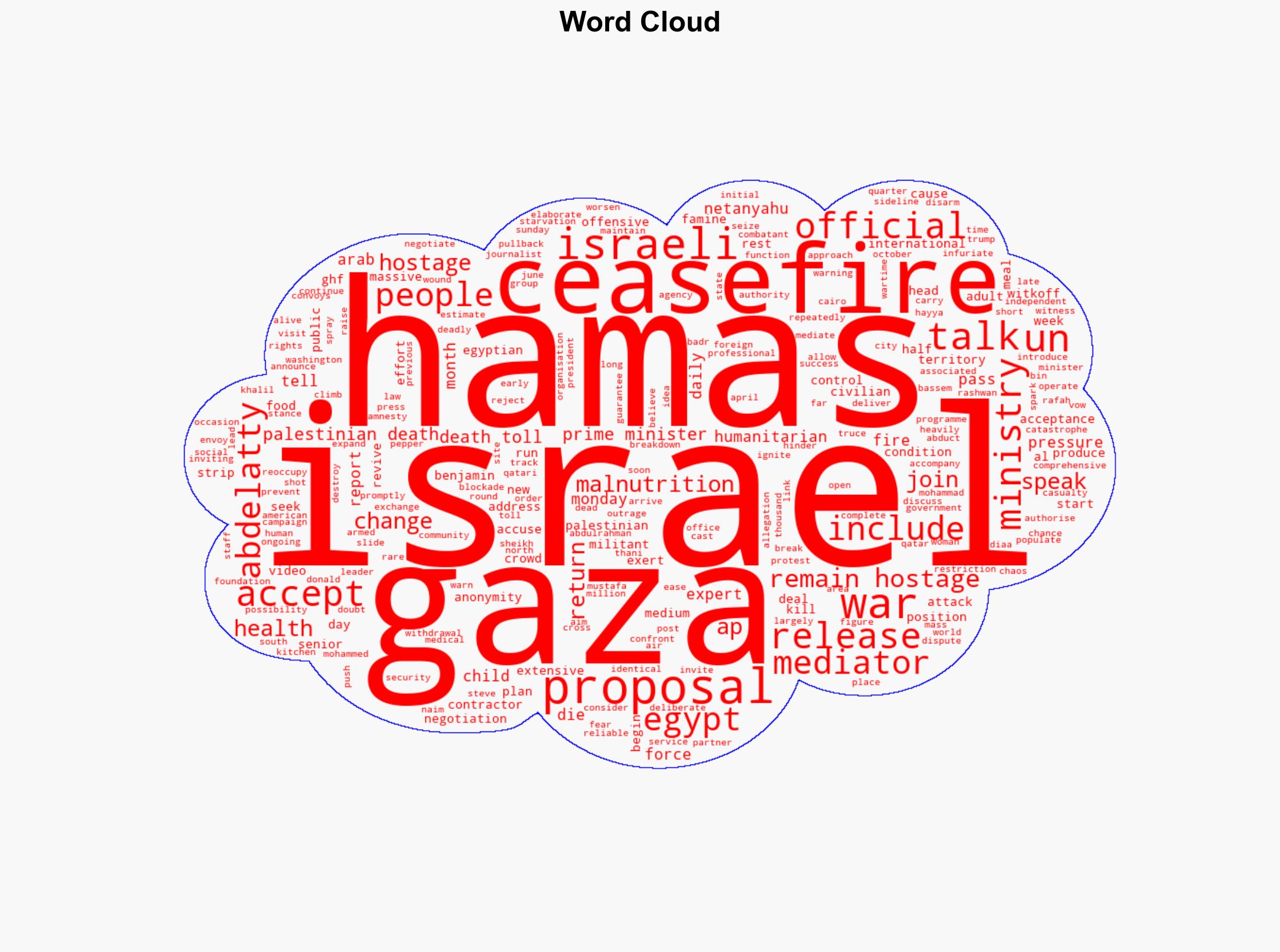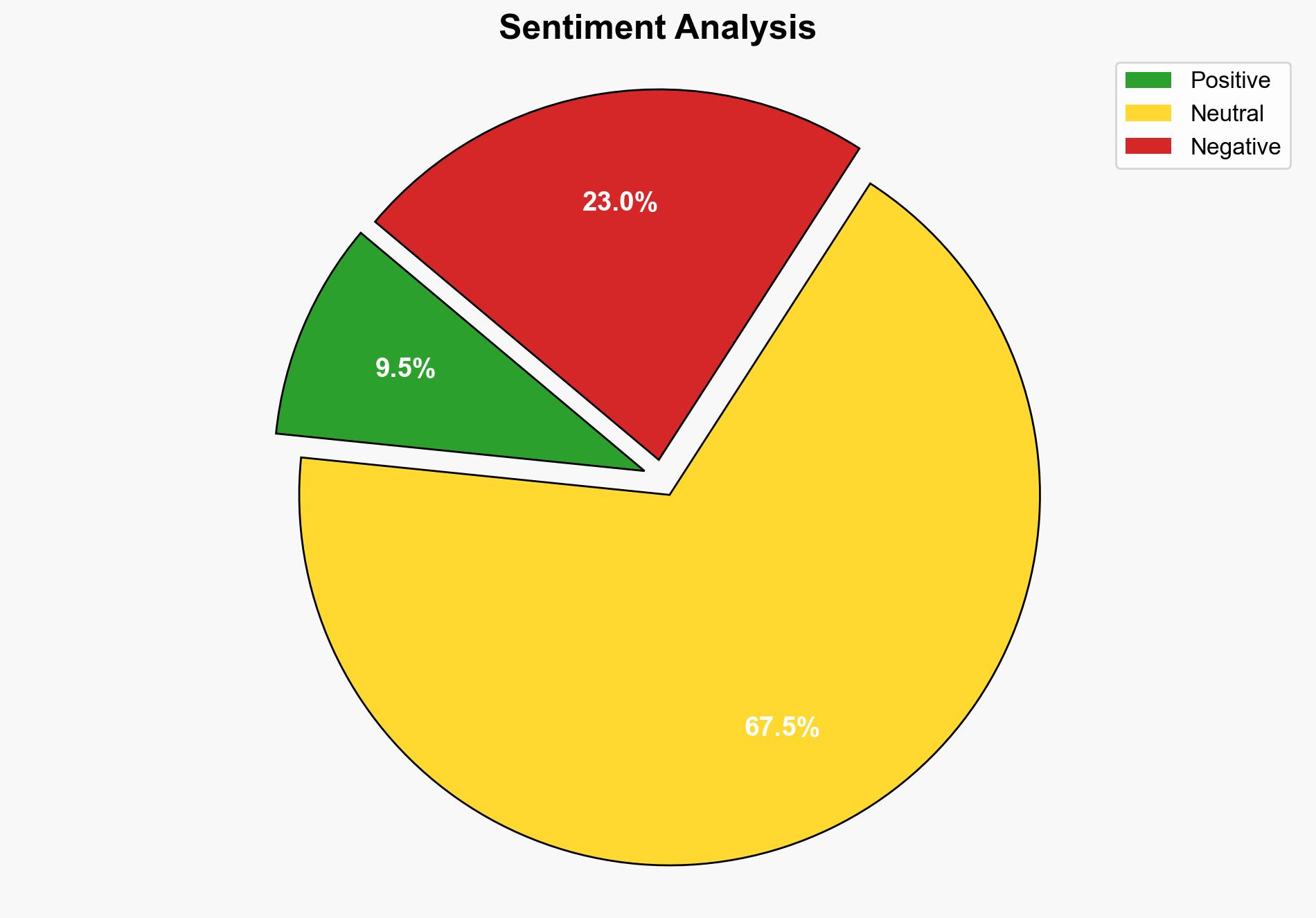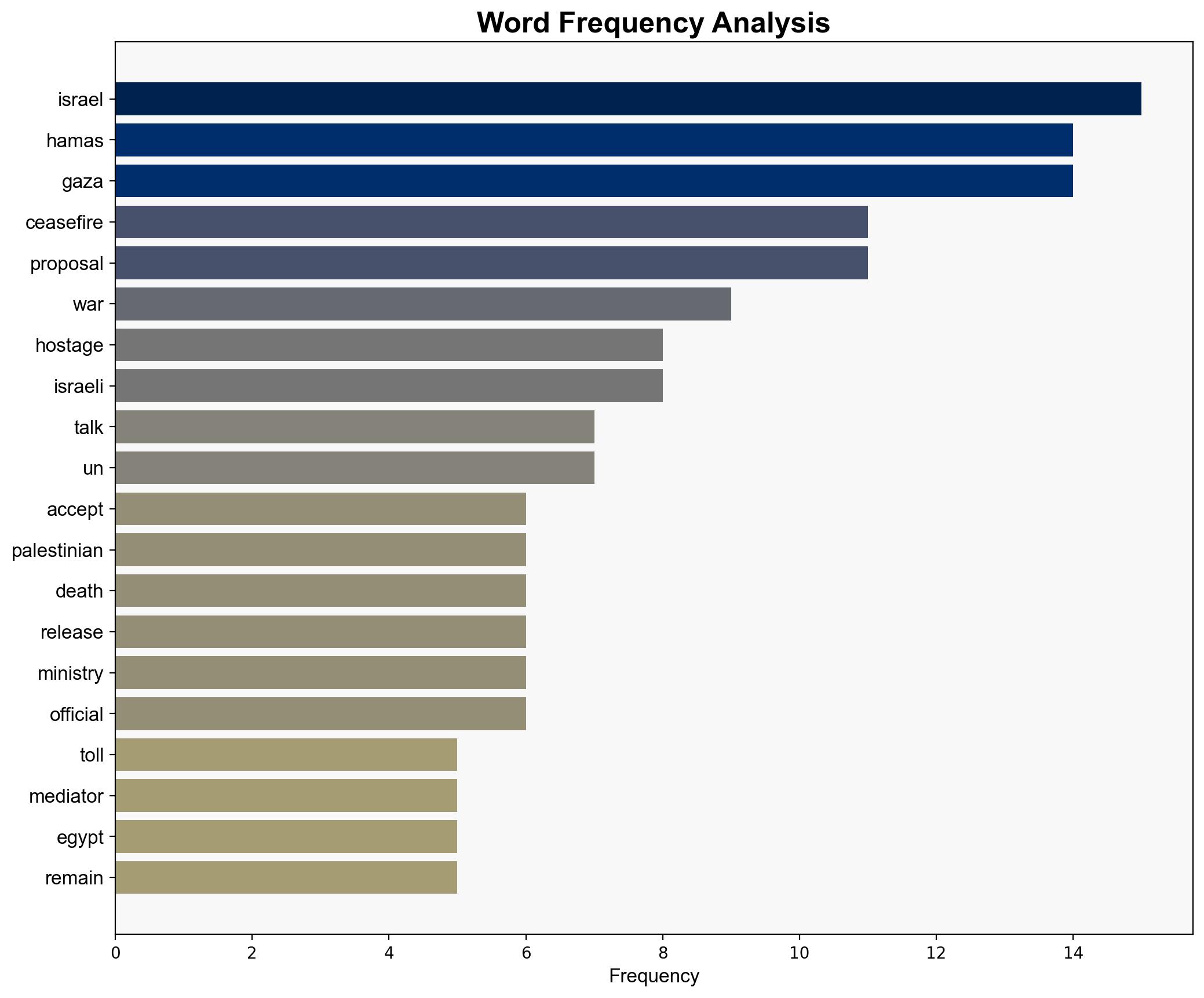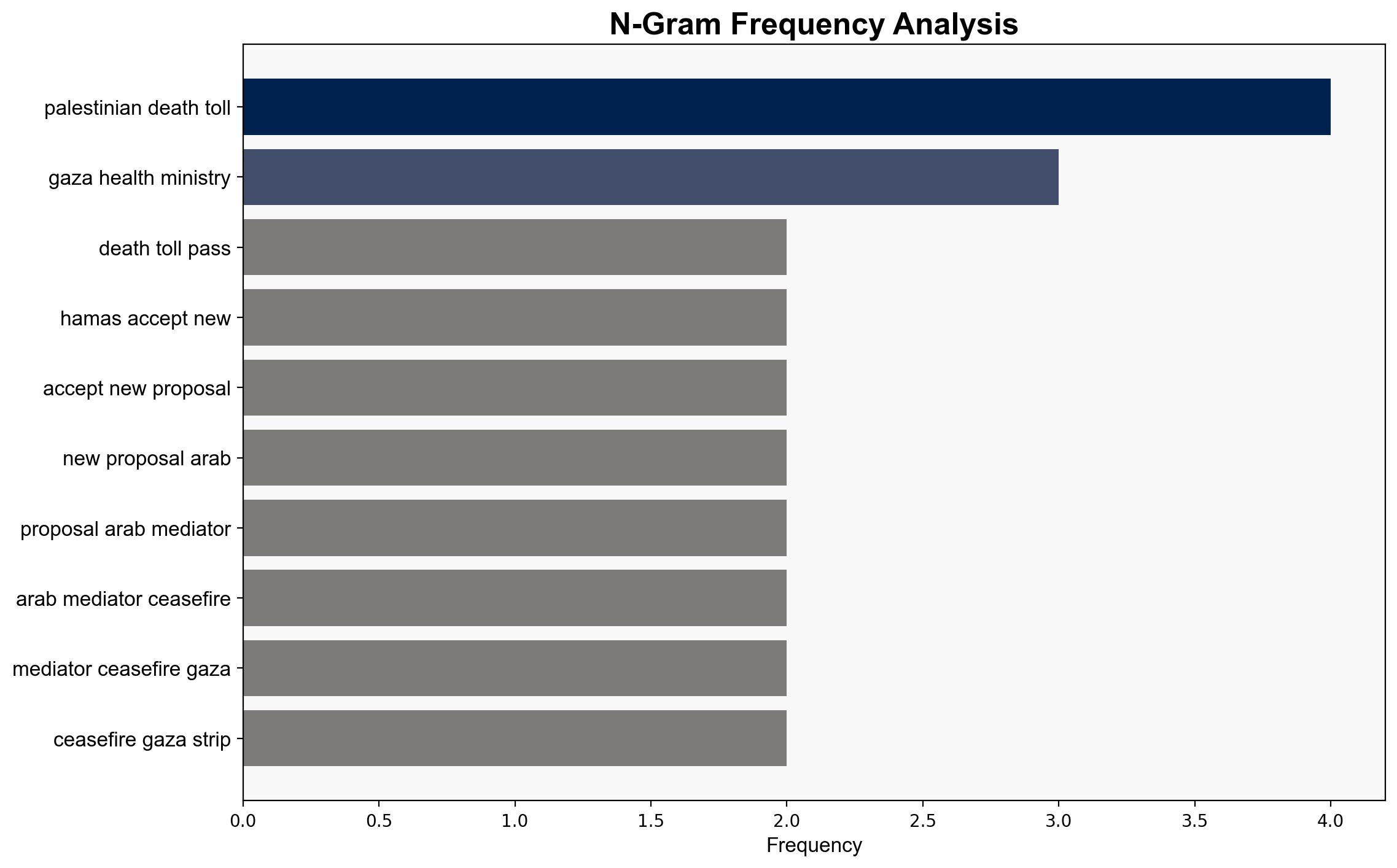Hamas accepts Arab ceasefire proposal Palestinian death toll passes 62000 – ABC News (AU)
Published on: 2025-08-18
Intelligence Report: Hamas accepts Arab ceasefire proposal Palestinian death toll passes 62000 – ABC News (AU)
1. BLUF (Bottom Line Up Front)
The most supported hypothesis is that Hamas’ acceptance of the Arab ceasefire proposal is a strategic move under international pressure, rather than a genuine shift in stance. Confidence level: Moderate. Recommended action: Engage in diplomatic efforts to ensure the ceasefire is sustainable, while preparing for potential escalations if talks fail.
2. Competing Hypotheses
1. **Hamas’ Acceptance as a Strategic Move**: Hamas is accepting the ceasefire proposal primarily due to international pressure and the dire humanitarian situation in Gaza. This move is aimed at gaining a tactical pause to regroup and strengthen its position.
2. **Hamas’ Acceptance as a Genuine Shift**: Hamas is genuinely shifting its stance towards peace due to the high Palestinian death toll and the potential for a humanitarian catastrophe, indicating a long-term change in strategy.
Using ACH 2.0, the first hypothesis is better supported by the evidence of ongoing hostilities, Israel’s unchanged stance, and the involvement of multiple international mediators, suggesting a complex geopolitical play rather than a simple resolution.
3. Key Assumptions and Red Flags
– **Assumptions**: It is assumed that Hamas has the autonomy to accept the ceasefire without internal dissent. It is also assumed that international pressure can significantly influence Hamas’ decisions.
– **Red Flags**: The unchanged stance of Israel and the potential for reoccupation of Gaza suggest that the ceasefire acceptance might not lead to a lasting peace. The high civilian death toll could be used as leverage by both sides.
– **Blind Spots**: The internal dynamics within Hamas and the potential influence of other regional actors like Iran or Hezbollah are not fully explored.
4. Implications and Strategic Risks
– **Potential Escalation**: If the ceasefire fails, there is a risk of intensified conflict, leading to further humanitarian crises and regional instability.
– **Geopolitical Impact**: The involvement of Egypt and Qatar as mediators could shift regional alliances and affect broader Middle Eastern geopolitics.
– **Psychological Impact**: The high death toll and ongoing hostilities could fuel radicalization and anti-Israel sentiment, complicating future peace efforts.
5. Recommendations and Outlook
- Engage with international partners to support the ceasefire and address humanitarian needs in Gaza.
- Prepare contingency plans for potential escalation scenarios, including increased military readiness and diplomatic outreach.
- Monitor regional actors’ involvement and adjust strategies to mitigate their influence on the conflict.
- Scenario Projections:
- Best Case: Successful ceasefire leading to sustained peace talks and humanitarian relief.
- Worst Case: Breakdown of talks, leading to reoccupation and further conflict.
- Most Likely: Temporary ceasefire with intermittent skirmishes and ongoing diplomatic negotiations.
6. Key Individuals and Entities
– Benjamin Netanyahu
– Donald Trump
– Badr Abdelatty
– Khalil al-Hayya
– Sheikh Mohammed bin Abdulrahman Al Thani
– Diaa Rashwan
7. Thematic Tags
national security threats, regional focus, counter-terrorism, geopolitical dynamics





